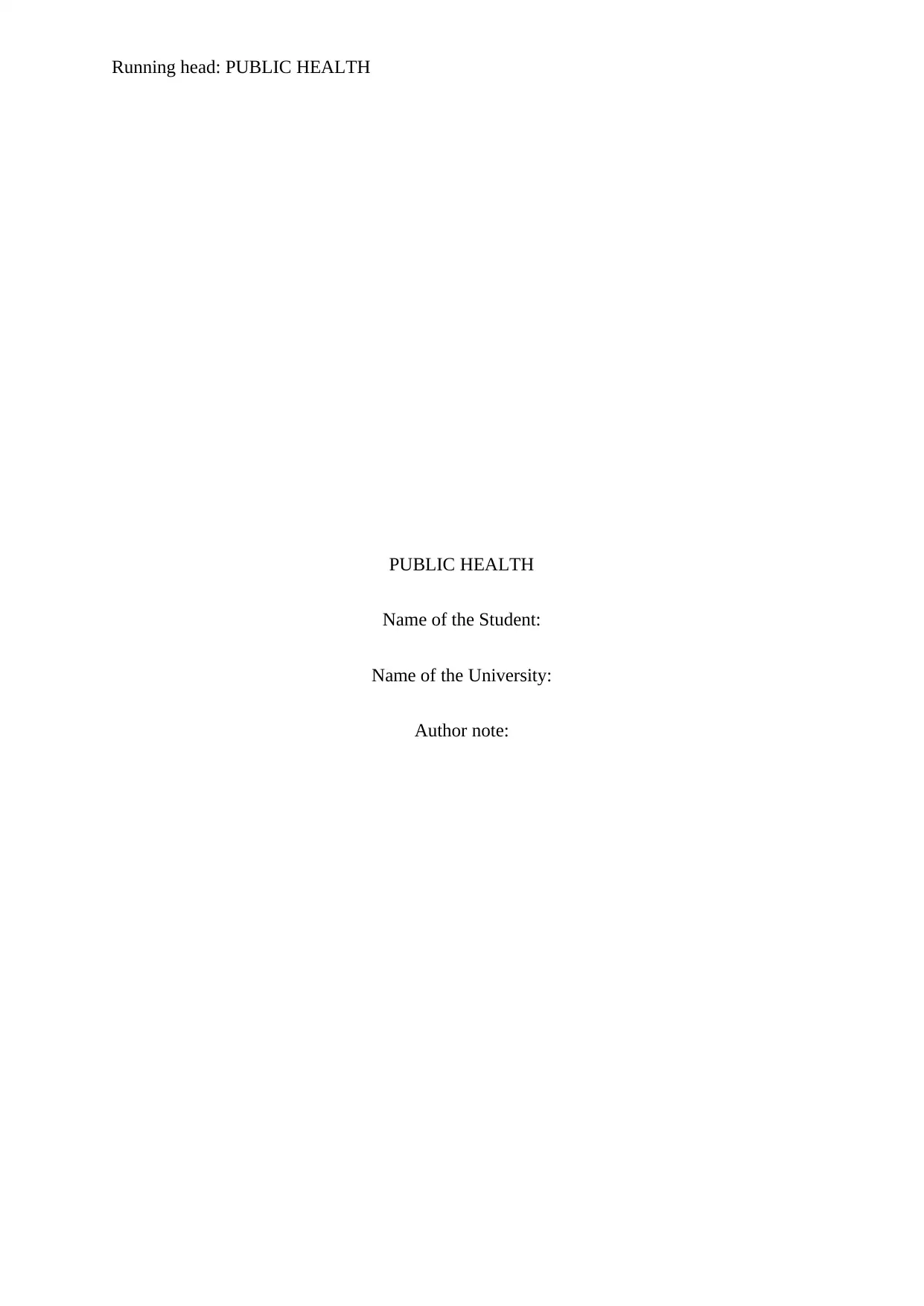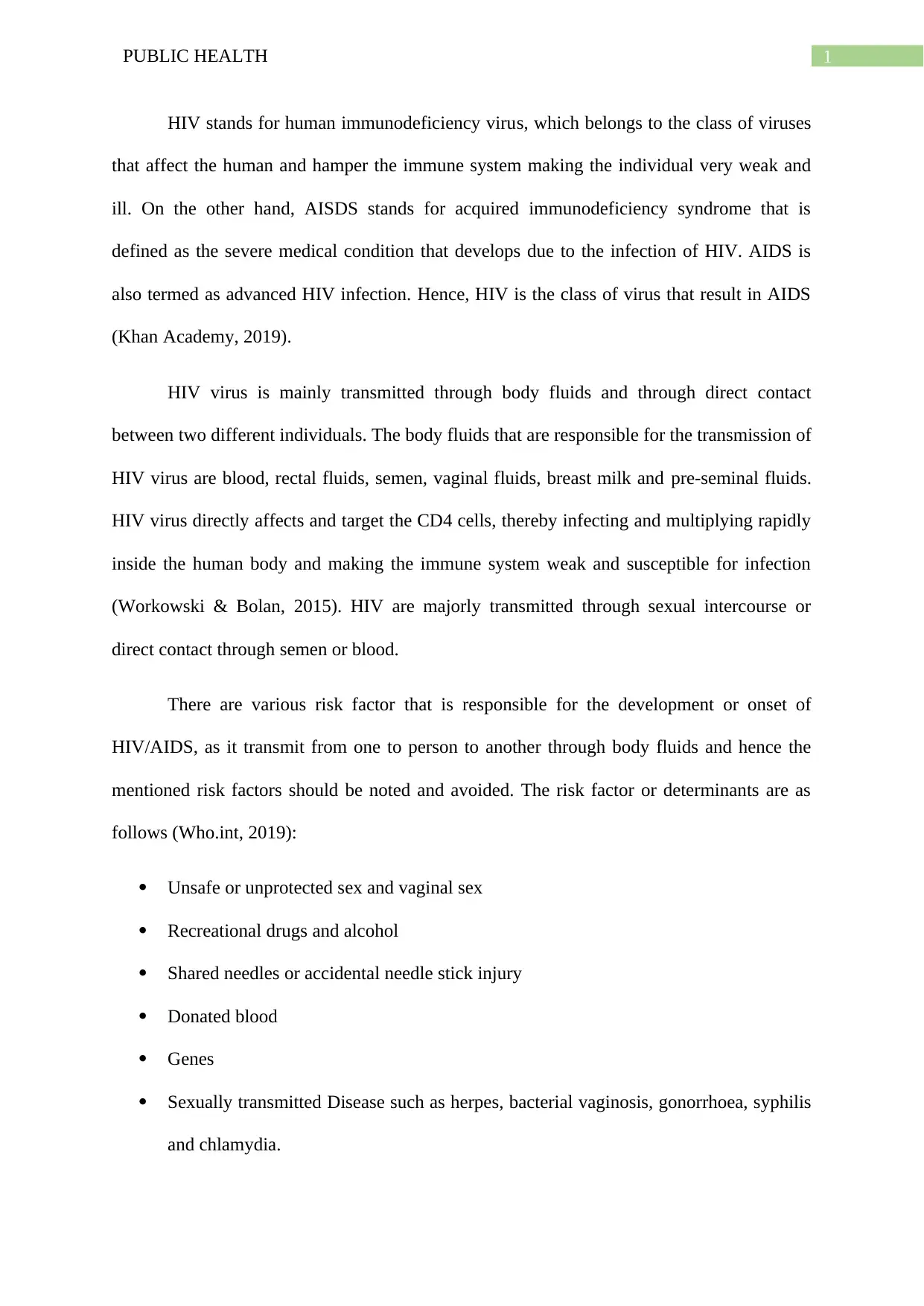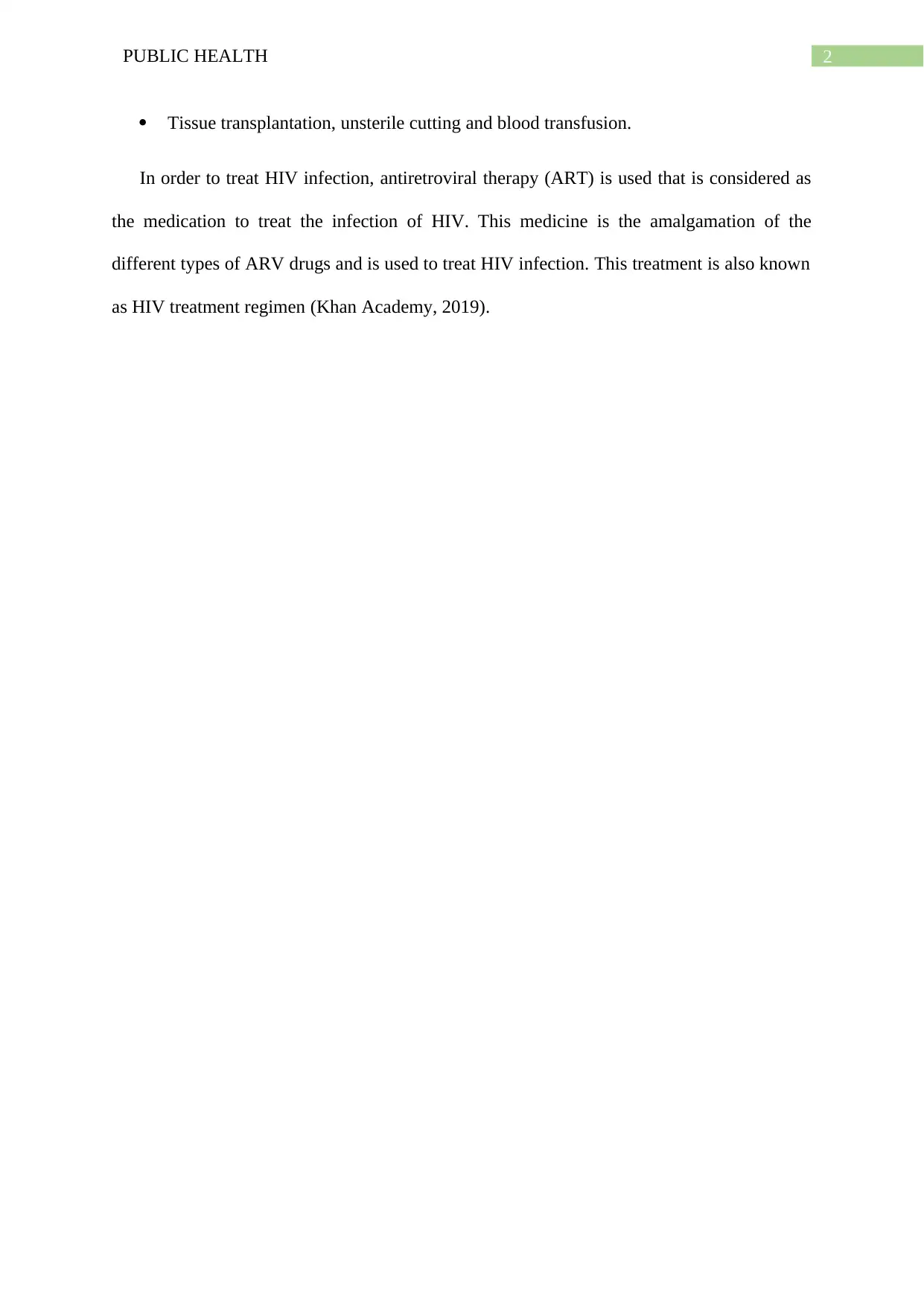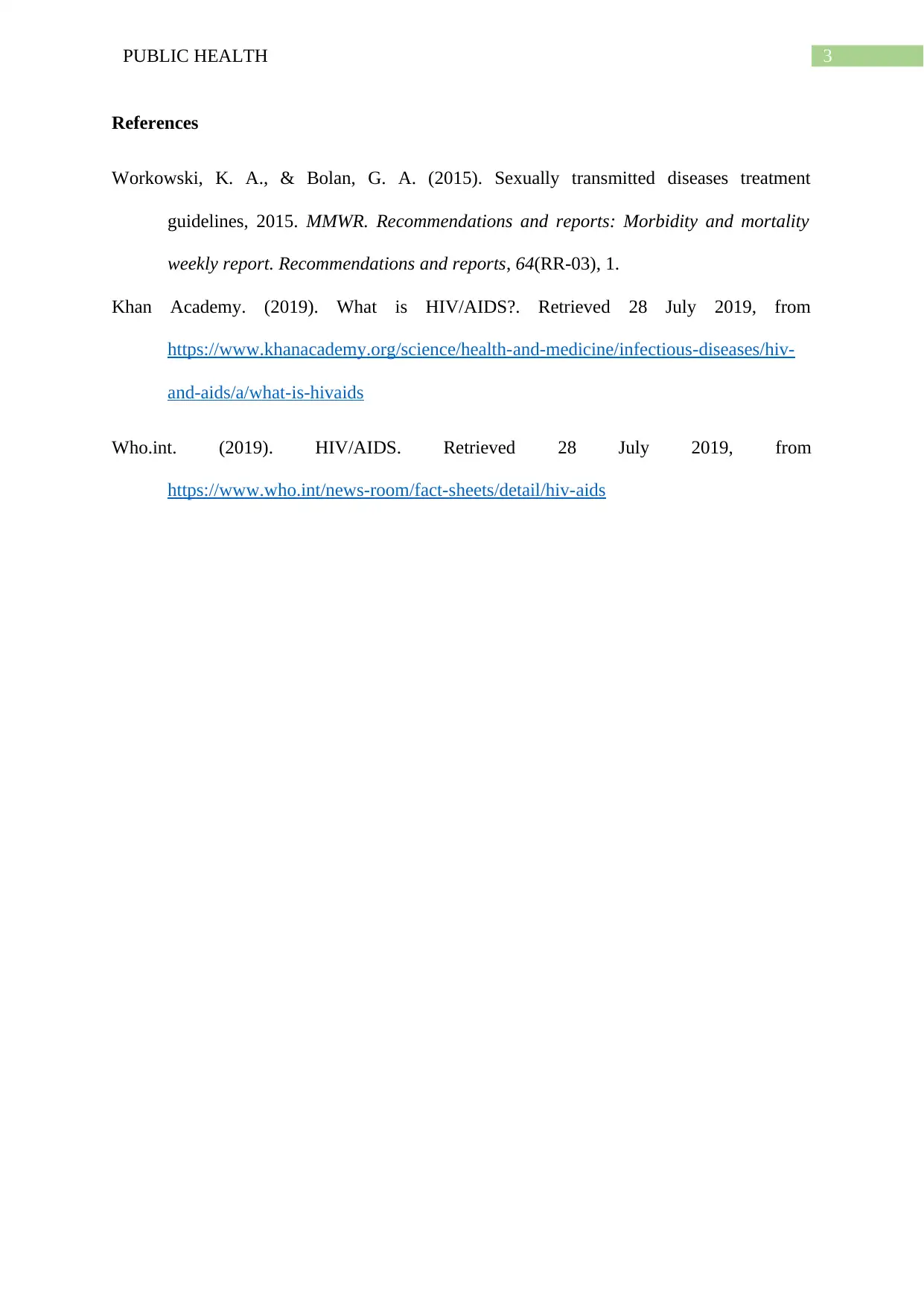University Report: HIV/AIDS, Public Health, and Treatment
VerifiedAdded on 2022/10/15
|4
|458
|16
Report
AI Summary
This report provides an overview of HIV/AIDS, including the definition of HIV and AIDS, and the transmission process through body fluids. It highlights the impact of HIV on the immune system and emphasizes the importance of understanding risk factors such as unsafe sexual practices, recreational drug use, and shared needles. The report also discusses the role of sexually transmitted diseases and tissue transplantation. The core of the report revolves around antiretroviral therapy (ART) as the primary treatment for HIV infection, explaining how ART is a combination of drugs that aims to manage the virus effectively.
1 out of 4











![[object Object]](/_next/static/media/star-bottom.7253800d.svg)